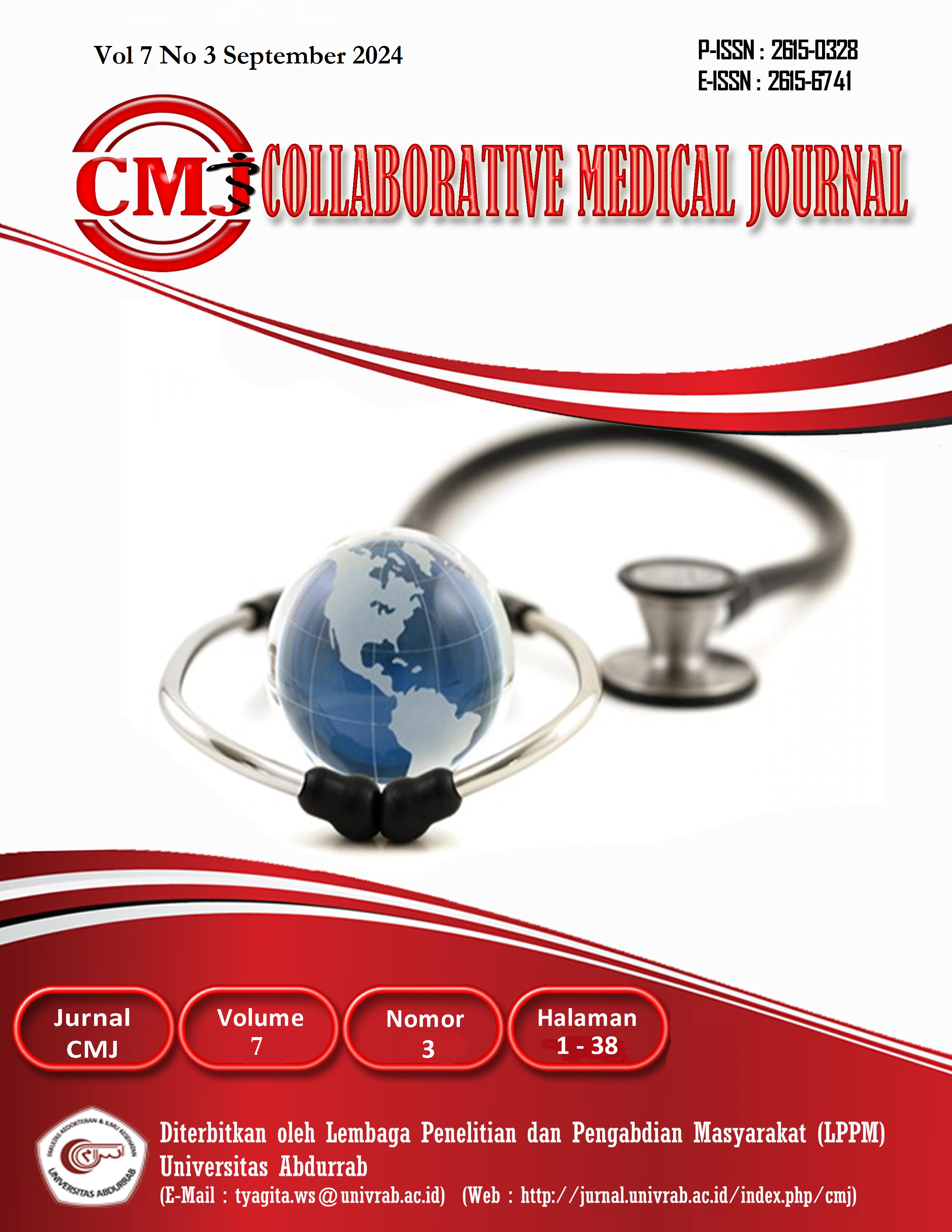HUBUNGAN KUALITAS PELAYANAN DENGAN KEPUASAN PASIEN DI PUSKESMAS TENAYAN RAYA PEKANBARU TAHUN 2024
DOI:
https://doi.org/10.36341/cmj.v7i3.5800Keywords:
Empathy, Patient satisfaction, Service qualityAbstract
expectations, are requirements that must be met in order to provide satisfaction to service users. Problems with the quality of health services in Indonesia include a lack of evaluation of health services and satisfaction surveys that do not involve patients. Based on the results of the initial survey, the Tenayan Raya Community Health Center received Plenary Accreditation which has succeeded in improving and maintaining the quality of health services for patients. This study aims to determine the relationship between service quality and patient satisfaction at the Tenayan Raya Pekanbaru Community Health Center in 2024. This type of research is observational analytics using a cross-sectional research design. The sampling technique in this research is accidental sampling technique. This research was conducted at the Tenayan Raya Pekanbaru Community Health Center. Respondents were 290 patients at the General Poly, Obstetrics, Dental and Oral Polyclinics in February 2024. The results of the study show that there is a relationship between service quality and patient satisfaction at the Tenayan Raya Pekanbaru Community Health Center in 2024 with a p-value of 0.000 with a positive correlation direction. Therefore, it can be concluded that service quality has a relationship with patient satisfaction at the Tenayan Raya Pekanbaru Community Health Center in 2024.
Downloads
Downloads
Published
Issue
Section
License
1. Copyright of all journal manuscripts is held by the Collaborative Medical Journal (CMJ)
2. Formal legal provisions to access digital articles of electronic journal are subject to the provision of the Creative Commons Attribution-ShareAlike license (CC BY-NC-SA), which means that Collaborative Medical Journal (CMJ) is rightful to keep, transfer media/format, manage in the form of databases, maintain, and publish articles.
3. Published manuscripts both printed and electronic are open access for educational, research, and library purposes. Additionally, the editorial board is not responsible for any violations of copyright law.
licensed under a Creative Commons Attribution-ShareAlike 4.0 International License.





